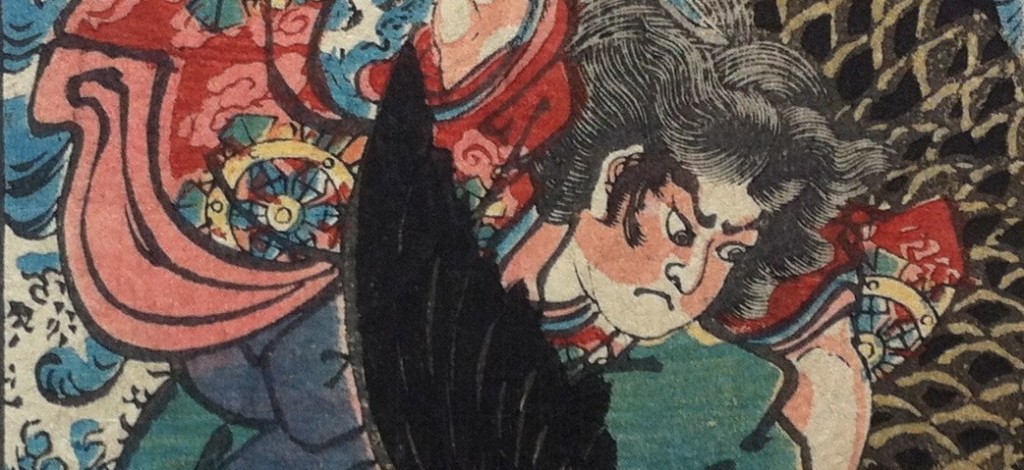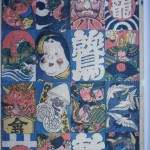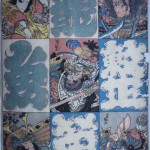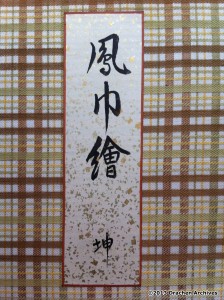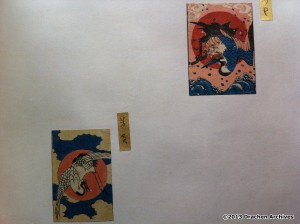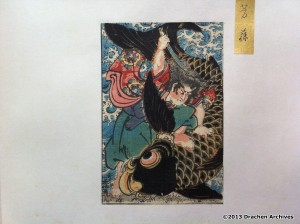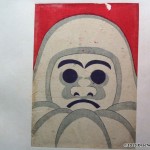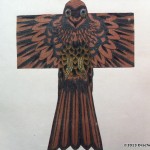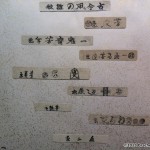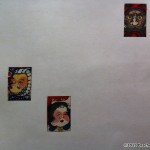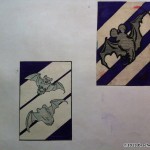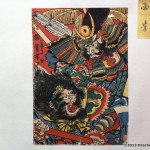For almost thirty years I have collected Japanese woodblock prints (ukiyo-e) that have images of kites somewhere in the print. At the time, I naively thought that there would be very few of these, that this would be an interesting addition to my kite collection, a part that would grow slowly and one that would be relatively inexpensive (as I thought it would be so rare to find any examples). I was lucky to be invited to Japan over a dozen times in the 1990s and early 2000s and on every trip, I would take time away from the group to search out ukiyo-e print dealers or antique districts that might have ukiyo-e as part of their offerings. Now, as I upload many of these images into the Drachen Foundation website (Search “Collections”, “Skinner Collection, Ukiyo-e” and you should find a number that have been uploaded), I’ve become re-familiar with their beauty, their wide variety, and the surprising number of prints that were made solely for the purpose of making of kites (“kites only” prints).
These “kites only” prints are usually titled rather generically; “Kite Designs” or “Some Kite Pictures,” and are different from kite omocha-e – kite shapes that were meant to be cut out, glued on a frame of some sort, and then played with as a toy. Instead, these “kites only” prints are made up of a number of rectangular Edo-dako (Tokyo kites) that complete the entire print. Very small images may be arranged in a 6 X 6 or 5 X 5 grid, medium-sized can be in a 4 X 4 or, most commonly in a 3 X 3 pattern. Sometimes, larger format kite pictures are arranged either in a 2 X 2 pattern, or even a 1 X 2, where the two prints show amazing detail and can be used as an ideal model-image for any full-size kite.
I should mention here, that, as I look back, it took me about 20 years to find 20 of these exciting kite ukiyo-e.
Now, let me tell you what I know about another collector of kite ukiyo-e: he (or maybe it was they, a father and son) collected kite images about 100 years ago, probably toward the end of the Meiji period (1868 to 1912). He carefully arranged his collection of kite drawings in two large accordion-style books – beautifully bound and boxed. As was the custom, or at least the way he felt these would be best preserved, each print of multiple images was cut apart so that every kite image could be displayed on the pages of the album (remember, at this time, these prints were commonplace, inexpensive, and made to be shared). In what is probably the first album, small gold labels accompany every ukiyo-e image to give a title to each. Additionally, there is “title page” with many of the signatures of the print artists who created the original ukiyo-e. I haven’t been able to translate all the artist’s names, but my favorite, Yoshifuji is included (the title page is included in this article so that you ukiyo-e sleuths might discover who the other artists are). As an aside, it’s appropriate that Yoshifuji, nicknamed omocha-e Yoshifuji, is included in this collection as he was famous for a series of toy pictures, “Edo Shumi Shinko Omocha-e” (Edo Pasttimes, New and Old Toy Pictures)
Now let me give you an idea of what this collector amassed. In the two volumes, there are almost 200 individual small images; those that might be found in a 5 X 5 or 6 X 6 oban ukiyo-e (full-page, large, print). There are approximately 150 that are slightly larger, probably from 4 X 4, but perhaps from 5 X 5 prints. There are over forty that came from 3 X 3 prints, three that came from a 2 X 2 panel (I can’t find the fourth) and four that came from 2 X 1 panels. If you translate the number of images into the likely number of prints from which they came, my guess is that it took between 6 and 8 prints to give 200 small images, between 6 and 9 to give the 150 slightly larger ones, seven prints to amass the 40 medium sized, and one and two prints respectively to give the large and largest. Without in-depth study, it is likely that this collector’s inventory of ukiyo-e was between 20 and 25 original prints – very close to the number that it took me twenty years to find!
I was extremely lucky to be offered this collection from a Japanese dealer and I worked very hard to learn more about where this collection came from. I was disappointed, but fully understood the dealer’s reluctance to tell me any more about the family or individual who worked so hard to save these images. So for now, I know only that there was a man who was as passionate about kites as I am, who lived about 100 years ago in Japan, and who fell in love with the artistry and imagery that is the Japanese Kite.
Small Photo Gallery:
To see and learn more about Japanese kites, a selection of kites from one of the best western Japanese kite collections of David Kahn, will open at the Museum of International Folk Art, Santa Fe, New Mexico (www.internatonalfolkart.org) on June 9, 2013 and run until March 23, 2014. Public programming will include, kitemaking workshops, and kite flying on the plaza at Museum Hill. Join in the fun.
Scott Skinner

